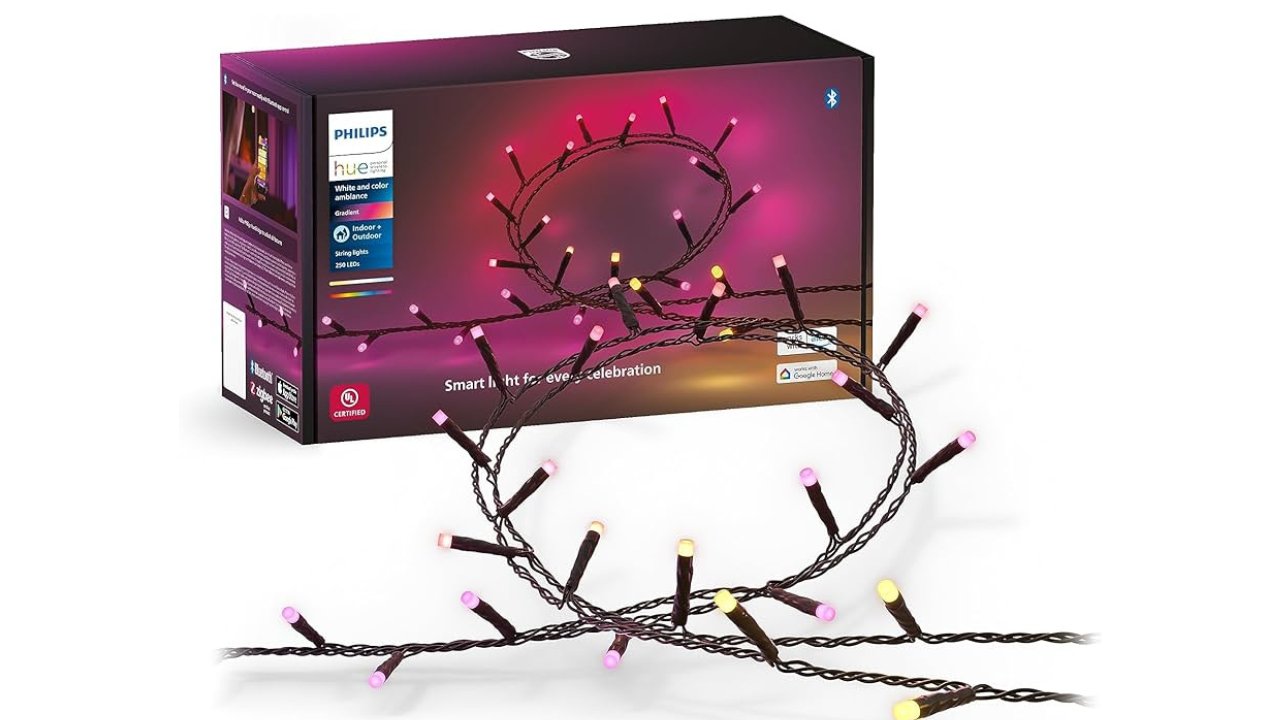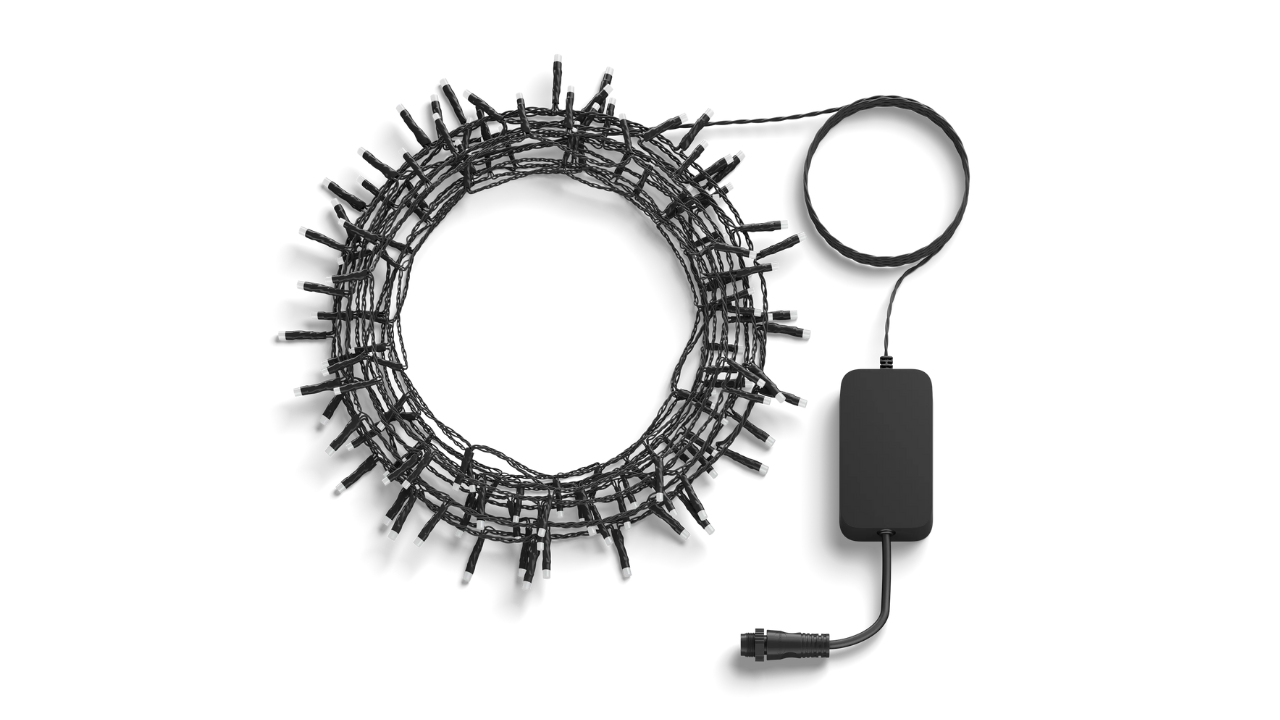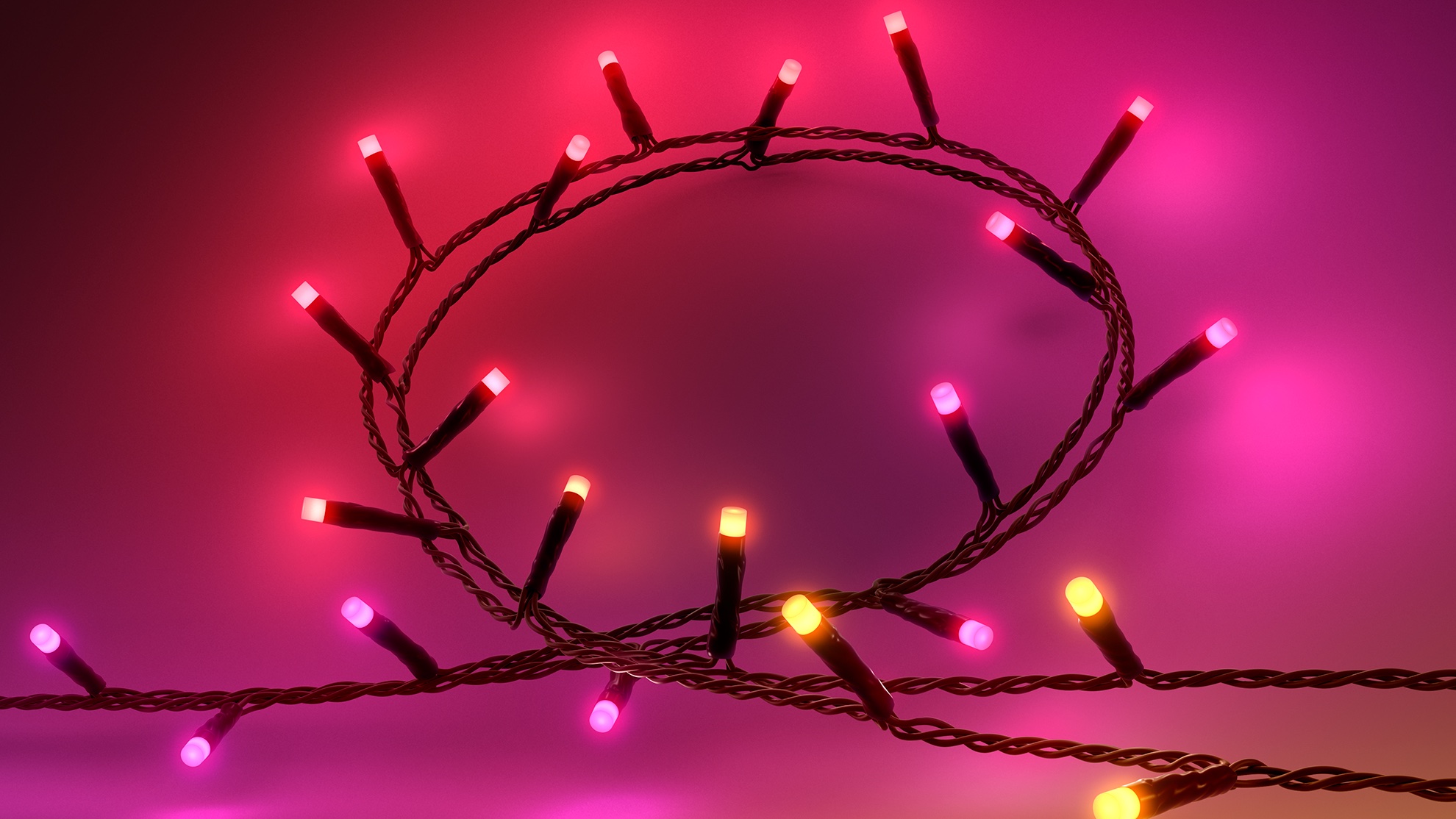
When Philips Hue announced a new generation of its Festavia string lights last summer, it bought a lot of high expectations subsequently followed. Whilst the first generation made an impact as a festive solution to smart lighting, there were a number of disappointing features that set the model back. We awarded them three stars in our full review, and despite this score being indicative of a good product, it's on the lower side for an impressive brand such as Philips Hue.
Soon enough, the Philips Hue Festavia (2nd gen) string lights arrived. Whilst the two generations look similar in design, there are a number of different features that set the model apart from its predecessor. To find out more, I reviewed the Philips Hue Festavia (2nd gen) for a good few months, testing the lights both inside and outside.
Keep reading to find out whether the lights are improved version of the first generation, and if they can receive a higher rating than the original review.
Philips Hue Festavia (2nd gen) review: price and availability
Unlike the first generation, there are now three lengths of the Philips Hue Festavia to choose from. The 100 LED (8 metres) option is £109.99/€119.99, the 250 LED (20 metres) is £199.99/€219.99 and the 500 LED (40 metres) is £319.99/€359.99.
I've been reviewing the 250 LED option, and at the time of writing this, this is the only option available to buy. Retailers such as John Lewis and Amazon stock the Festavia, but again, the 250 LED option is the only length I've been able to find.
Philips Hue Festavia (2nd gen) review: unboxing and set up
Unboxing the Philips Hue Festavia (2nd gen) is certainly on the simpler side, and just requires connecting the power adaptor to the lights themselves. They're also extremely lightweight, making it easy to unravel and place wherever you want them.
The cord is 20 metres long, so there's a lot of variety with how you'd like to use them. I'd say this reaches around a medium sized Christmas a couple of times, or a large one perhaps once.
The second generation box is also slimmer than the first, taking a rectangular shape instead of a square. I always prefer it when brands change the packaging between upgrades, especially as it makes it easier to differentiate between the two.

Philips Hue Festavia (2nd gen) review: design and features
The main difference between the two generations is that this model is weatherproof, meaning the lights can be used both inside your home and outside. This upgrades the Festavia from being exclusively suited to Christmas trees, allowing them to be a great option for decorating al fresco dining areas or under a veranda. I've been using mine above my garden patio, and they look absolutely fantastic.
The new generation is also low-volt compatible, meaning they can be connected to the same power supply unit as other outdoor lights. If you want to stick to the Festavia look, the PSU is 30 watts, meaning you can add multiple Festavia string lights until you reach the maximum wattage. For example, the 250 LED option is 14 watts, so you can add two sets to the same power supply if you're looking to increase the amount of light. However, the 500 LED option is 28 watts, so you'd only be able to have the one set.

The new generation also brings with it three new light effects, specially made for Festavia: Prism, Glisten, and Opal. These effects are also be available for first generation Festavia, and the Prism effect is available for all Philips Hue colour-capable lights.
The actual LEDs haven't changed, and still feature a circular, flat-tipped design with black sheaths. There's also still a small gap between each LED, meaning the light is distributed nicely and they don't get stuck together easily. Users are able to control three points along the string light to create a gradient of light. However, whilst each LED can display a different colour at the same time, you can’t control each light individually.
The Festavia string lights can also sync up to music, although a Hue Bridge is required to do so.

Philips Hue Festavia (2nd gen) review: performance
Upon using the Philips Hue Festavia, it's clear that new generation is miles ahead of the first. I first received the lights just before Christmas, so they were wrapped around my tree for a good three weeks to begin with.
The feature I enjoyed the most during this time was the gradient LED zones. As mentioned, this allows you to have three different colours of lights on at any one time, and it looks particularly great on a Christmas tree. I also liked using the different effects, especially the Opal and Glisten setting. It's a clever move from Philips Hue to release a couple of effects that are exclusive to a particular product, especially as they're so pretty.
Colour-changing lights from Philips Hue are able to display over 16 millions colours and multiple shades of white, and the Festavia are no exception. I was able to control them easily through the Hue app and via Bluetooth, but did prefer using them as part of my Philips Hue smart lighting set up. This requires using a Hue Bridge, so I would recommend buying one if you're after the full experience.

After Christmas, I moved the lights outside, stringing them above my patio. I continued to be impressed by the Festavia, and due to living in England, they were truly put to the test when it came to their IP rating. I had them up for around six weeks, and they continued to perform at their best throughout that time. I did notice that the LEDs were more effective when inside, but that was always going to be expected.
My one gripe with the Philips Hue Festavia is the unsightly black cord. This was a complaint with the first generation, so I was hoping the brand would have explored alternative options. It almost makes the cord stand out more than it should, especially when against the Christmas tree.
Philips Hue Festavia (2nd gen) review: verdict
Overall, it is clear that the second generation of the Philips Hue Festavia is a strong upgrade from the first. Whilst the two versions look similar in design, the new model now comes in multiple lengths, has exclusive effects and most importantly, can be used outside as well as inside. Whilst I can't fault the performance of the new generation, it is a shame Philips Hue didn't improve the look of the unsightly black cord. The lights are also often sold out, but if we put that down to how popular they are, surely that's a good thing?
Philips Hue Festavia (2nd gen) review: alternatives to consider
If you're looking for a cheaper alternative to the Philips Hue Festavia, I'd go for the Nanoleaf Holiday String Lights. They're available in just the one option, the 250 LEDs with 20 metre string, but there are many ways to control them, including Wi-Fi, Bluetooth, with a controller or via the Nanoleaf App. The lights are also Matter compatible, and can be used indoors and outdoors. They don't feel as high quality as the Festavia, but they're still a great (and affordable) choice.
Another alternative to consider would be the Twinkly Strings. Starting off at £69.99, the lights come in four different options: 100 LEDs, 250 LEDs, 400 LEDs and 600 LEDs. Unlike the Festavia, they're available on a black string or a green string, and can be controlled with the Twinkly app or via their existing smart home system. An IP44 certification ensures that they can be used outdoors as well as indoors.
If you're interested in more, check out our comparison between the Philips Hue Festavia and the WiZ Outdoor String Lights.







